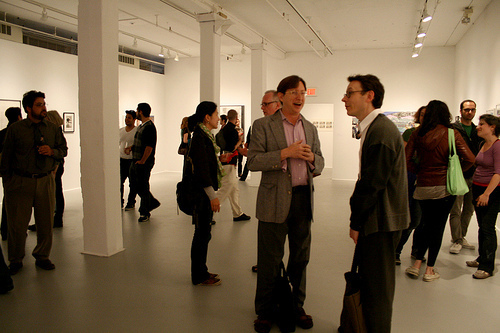Accessibility
Brainstorming a series of fine art tutorials has me thinking a lot about this idea of accessibility. One of the aspects of the contemporary fine art world that has always bothered me is how incredibly exclusive it is. In my experience, so much of the fine art world behaves in an elite, condescending manner towards the layman. Take contemporary art galleries, for example: the last time I was in New York City walking around art galleries in Chelsea, one thing I noticed was how cold and unfriendly the people working in the galleries were. I walked into one gallery where the two people at the desk wouldn’t even make eye contact or greet me as I walked into the gallery. In the past, when I did make an attempt to talk to someone in the gallery, I felt like I was intruding on their space, and how dare I try to speak to them. Can you imagine any other business or store treating a visitor in such a manner? All of these qualities sends a harsh message to the average person that the contemporary fine art world is off limits to them, it’s a closed world that they cannot enter.
Many other fields, like design and illustration, across the board aggressively make themselves accessible to the general public. There are millions of professional blogs, TV shows, online tutorials, social media sites for these fields. This accessibility is completely accepted and encouraged by other professionals in these fields. This is not the case in the contemporary fine arts world. The vast majority of professional fine artists today present their work with a mystique. They don’t generally show any glimpse of their creative process, all of the mistakes and blunders are completely hidden from the public. One of my favorite things about Julia Child was that she was not afraid to make a mistake on camera. Instead of being embarrassed by her mistake, she would transform it into a teachable moment and explain how to fix it and move on. For many people, her mistakes taught people just as much, if not more than when they watched her do something perfectly.
I’ve written in the past about how at times I get self-conscious about the fact that I blog extensively about my fine arts work. I worry that many of my academic colleagues would look down on the kind of writing and blogging that I do. My approach to my writing is conversational and not written for an academic audience. For this reason, I’m an anomaly in the academic fine arts world. This is why I’m thinking that a series of art tutorials from someone with my background could fill a niche that has not been addressed so far.






